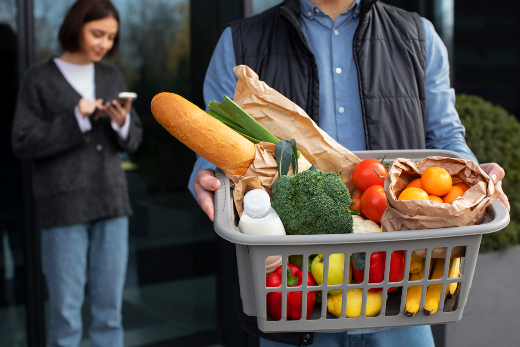The grocery aisle is undergoing a profound shift. UK households are spending on average £275 more per year on food due to stubborn inflation, according to July’s Kantar data, with grocery price inflation running at 5.2% in mid-July. That pressure is driving lasting changes in consumer behaviour: shoppers are swapping fresh for frozen, branded goods for private labels, and trimming multipack buys. What once looked like temporary belt-tightening is crystallising into new, long-term shopping habits — and supermarkets are racing to adjust.
Grocery Inflation Reshapes Household Spend
The Food Standards Agency (FSA) reported on 8 August that low-income households are increasingly adopting structured “survival strategies” such as meal-stretching, trading down, and reducing fresh produce purchases. Rising costs are hitting core categories hardest — meat, dairy, and beverages remain the biggest contributors to inflationary pressure, according to Kantar’s market tracking.
Supermarkets have leaned heavily on loyalty card mechanics and targeted promotions to retain shopper loyalty. Tesco’s Clubcard Prices and Sainsbury’s Nectar Prices are delivering double-digit discount penetration in high-frequency categories. Meanwhile, frozen foods are seeing a surge: NielsenIQ data shows frozen produce volumes up by 6% year-on-year in Q2 2025, compared to a 2% decline in fresh.
These shifts matter because they represent not just a short-term reaction, but a recalibration of household shopping “rules.” For stretched families, frozen food is no longer just a fallback but a central strategy for managing weekly budgets.
Trading Down and the Private Label Effect
The trade-down effect is now entrenched. Where mid-tier private label once served as a compromise between quality and affordability, shoppers are now moving directly to entry-level SKUs. Bernstein analysis highlights that entry-tier private label penetration in the UK has risen to 14.7% of grocery baskets in June, up from 12.3% a year earlier.
Families are also stretching purchases through bulk packs and frozen alternatives. Aldi and Lidl are benefitting disproportionately: the latest Kantar Worldpanel figures show Aldi’s market share climbing to 11.4% in July, while Lidl reached 8.4% — both at record highs. In contrast, premium retailers such as Waitrose are experiencing a squeeze, with flat or declining share.
The trend is not confined to the UK. In the US, frozen food sales are up 4.6% year-on-year (FMI data, July 2025), while Eurostat notes a 5% increase in private-label penetration across Eurozone grocery markets in H1 2025. Discounters and wholesale clubs are consistently outperforming traditional grocers across all three regions.
Regional Shopper Shifts and Competitive Pressure
Regional patterns are shaping retailer strategies. In the UK, supermarket loyalty programmes have been used as the primary defence against discounters. In the US, Walmart and Kroger are leveraging bulk-pack strategies, while Costco’s membership model continues to capture inflation-sensitive households. Across the EU, German discounters are setting the pace, forcing established retailers such as Carrefour and Auchan to double down on private-label innovation.
Suppliers face mounting pressure as supermarkets renegotiate contracts around volume guarantees and promotional support, particularly in dairy and protein categories. For branded FMCG players, the challenge is acute: balancing price increases against volume losses to private label.
GSN analysis
These changes are structural, not temporary. Shopper habits formed under two years of inflation are sticking — and that forces supermarkets to reset product mix, promotions, and loyalty mechanics. Frozen food and entry-level private label are no longer “emergency buys” but staples of household budgeting. Retailers that act decisively now will lock in consumer trust and wallet share for the next decade.
For suppliers, this represents a dual challenge: maintaining brand equity while adapting pack sizes and formats to align with shifting demand. The winners will be those who innovate in value — not just price — through nutrition, convenience, and sustainability.
Looking Ahead: Christmas 2025 and Beyond
As the sector enters the Christmas trading cycle, the tension between value and indulgence will be on full display. Expect discounters to expand premium seasonal ranges at aggressive price points, while mainstream supermarkets will rely on loyalty-driven promotions to preserve basket size. If current inflationary pressures persist into Q4, frozen festive lines could see record uptake.
For retailers, the lesson is clear: the post-inflation consumer has rewritten the rules of grocery shopping. The question now is which chains adapt fast enough to keep their place in the cart.



